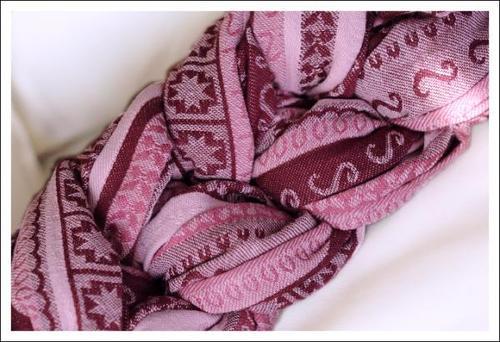The Babywearing Glossary
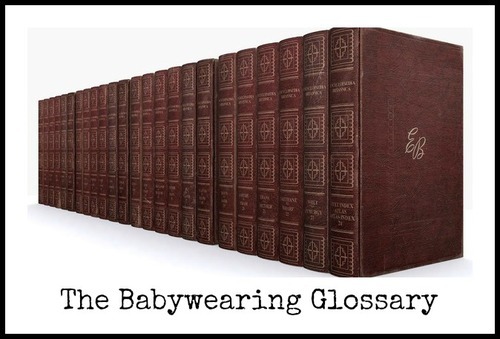
Types of baby carriers and their common abbreviations
Full Buckle aka FB:
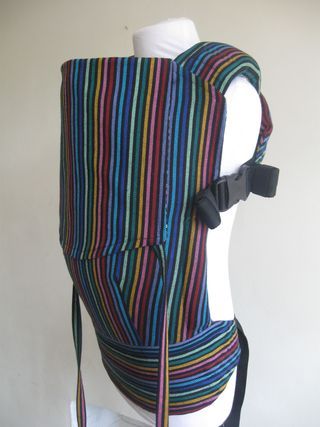
A custom made carrier (often a wrap conversion, WCFB), with waist and shoulder strap buckles.
Pros: Visually stunning and often custom. You can have your dream carrier designed to fit you and your baby if you are lucky enough to score a custom slot with a converter. Easy to use and quick to put on. No dragging tails on the ground.
Cons: Usually expensive. Can be difficult to buy, especially if you are looking for a custom slot. They are sized, which means fit will depend both on mama and baby size. You usually have to size up as your baby grows. Difficult to use the same carrier with children of different sizes (ex: a newborn and a 3 year old).
Common Brands: Bamberoo, Tula, Ocah.
Half Buckle aka HB:
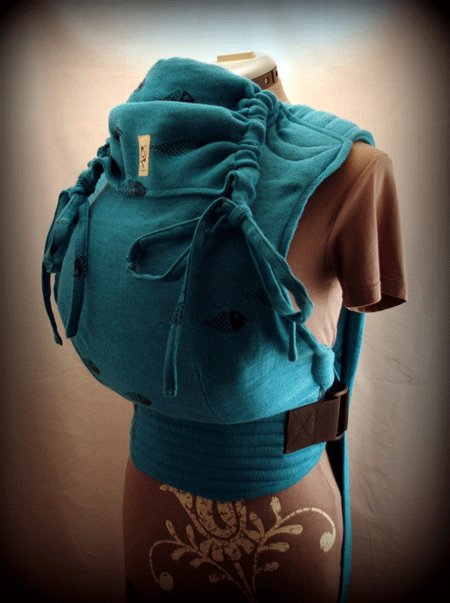
A custom made carrier (often a wrap conversion, WCHB). It adopts the style of the mei tai but with a buckle at the waist instead of ties. A “Reverse Half-Buckle” is a waist that ties like a mei tai but with buckle straps like a soft structured carrier.
Pros: The buckle waist provides the support, structure, and ease of use of a soft structured carrier, while the mei tai straps let you tie in a way that is comfortable to you.
Cons: Can be expensive and hard to get a custom slot. Some people can find buckle waists diggy or find that it does not cinch tight enough if they are very petite.
Common Brands: Dream Carrier, Obimama, Ocah.
Mei Tai aka MT:
Full Buckle aka FB:

A custom made carrier (often a wrap conversion, WCFB), with waist and shoulder strap buckles.
Pros: Visually stunning and often custom. You can have your dream carrier designed to fit you and your baby if you are lucky enough to score a custom slot with a converter. Easy to use and quick to put on. No dragging tails on the ground.
Cons: Usually expensive. Can be difficult to buy, especially if you are looking for a custom slot. They are sized, which means fit will depend both on mama and baby size. You usually have to size up as your baby grows. Difficult to use the same carrier with children of different sizes (ex: a newborn and a 3 year old).
Common Brands: Bamberoo, Tula, Ocah.
Half Buckle aka HB:

A custom made carrier (often a wrap conversion, WCHB). It adopts the style of the mei tai but with a buckle at the waist instead of ties. A “Reverse Half-Buckle” is a waist that ties like a mei tai but with buckle straps like a soft structured carrier.
Pros: The buckle waist provides the support, structure, and ease of use of a soft structured carrier, while the mei tai straps let you tie in a way that is comfortable to you.
Cons: Can be expensive and hard to get a custom slot. Some people can find buckle waists diggy or find that it does not cinch tight enough if they are very petite.
Common Brands: Dream Carrier, Obimama, Ocah.
Mei Tai aka MT:
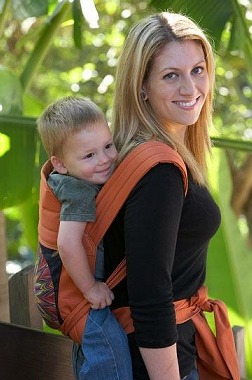
A mei tai is an Asian-style carrier that is tied. It features a body panel with two long shoulder straps coming from the top right and left-hand corners to tie with two waist straps coming from either base corner. Various sizes available: baby, toddler, preschooler etc. Some have padded waistbands and shoulder straps. Can be used for front or back carries.
Pros: Easy to adjust the height of the carry. Fairly easy to nurse in. If the straps are long enough, the carrier can be shared by wearers of very different sizes.
Cons: A slight learning curve. Very long straps that drag on the ground. Usually sized and many find they need to size up as their baby grows to maintain a comfortable, ideal seated position.
Common Brands: Babyhawk, Freehand, Infantino Sash, Kozy.
Onbuhimo aka Onbu:
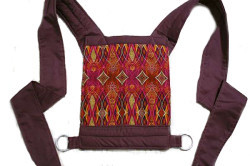
An onbu is an Asian-style carrier of Japanese origin. Similar to a Mei Tai, it has a panel with two shoulder straps, but with rings at the waist through which the arm straps are threaded. It is available in various sizes to suit the age/size of the child.
Pros: Quick ups and downs due to only having the two straps and no waist belt to secure. Not having a waist strap makes it easy to tie off up high which makes it especially good for pregnant women. Good for toddlers. No back passes necessary.
Pros: Easy to adjust the height of the carry. Fairly easy to nurse in. If the straps are long enough, the carrier can be shared by wearers of very different sizes.
Cons: A slight learning curve. Very long straps that drag on the ground. Usually sized and many find they need to size up as their baby grows to maintain a comfortable, ideal seated position.
Common Brands: Babyhawk, Freehand, Infantino Sash, Kozy.
Onbuhimo aka Onbu:

An onbu is an Asian-style carrier of Japanese origin. Similar to a Mei Tai, it has a panel with two shoulder straps, but with rings at the waist through which the arm straps are threaded. It is available in various sizes to suit the age/size of the child.
Pros: Quick ups and downs due to only having the two straps and no waist belt to secure. Not having a waist strap makes it easy to tie off up high which makes it especially good for pregnant women. Good for toddlers. No back passes necessary.
Cons: Can be difficult to get the hang of threading the rings with a baby on your back. Not appropriate for smaller babies. Not very easy to find.
Common Brands: Two Momma Designs, Freehand
Podaegi aka Pod:
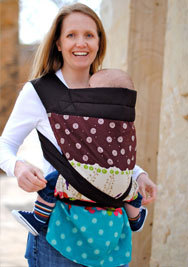
A pod is an Asian-style carrier of Korean origin. The predominant style is similar to a Mei Tai, with a panel and shoulder straps. A pod, however, does not have a waistband. This often makes them a popular choice with pregnant moms who want to continue to carry their older child(ren), as waistband ties are often uncomfortable as they are tied across the bump.
Pros: Can be used with straps or for torso carries. Easy to make a seat. Appropriate for any age baby. Multiple tie off options. Attractive- the baby’s weight is held up by the straps so the blanket can be made out of decorative fabric and it will still be safe. On that note, you can use a lightweight fabric for the blanket and keep cool. Only two straps to mess with, allowing for high tie offs.
Cons: Straps are either angled up or straight which can be limiting as straight straps are better for chest passes and torso carries and angled are better for ruck straps.
Common Brands: Freehand, Shiny Star Designs
Pouch Sling aka Pouch:

A pouch is a sling without rings. It is used for one shoulder front and hip carries. Most pouches are sized. Unlike ring slings, buying a pouch in the right size is very important. Most are not adjustable, and even the adjustable ones are not as adjustable as a ring sling. Beware of “just pay shipping” gimmicks done by companies like Seven Slings— these slings are very flimsy and uncomfortable and usually not worth the shipping price.
Pros: Easy to put on, usually inexpensive, easy to stuff in a diaper bag.
Cons: Hard to use properly and safely with a newborn. Many use it in a cradle carry which can easily be done unsafely (baby should never be horizontal and the chin should never be pressed into the chest). One shoulder carriers are not comfortable for bigger babies for long term wearing.
Popular Brands: Hot Slings, The Peanut Shell.
Ring Sling aka RS:
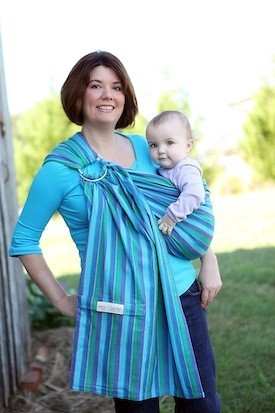
A length of fabric (can be made out of a woven wrap aka WCRS) with a pair of rings sewn into one end. Used for one-shouldered carries on front or hip, good for newborns up to preschooler. Great for quick up-&-down carries of a tired-legged toddler. There are various different shoulder types that you can read more abouthere.
Pros: Easy to nurse in, great for warm weather, perfect for quick ups and downs.
Cons: One shoulder carries can be uncomfortable for long periods with big kids. You might have to try several shoulder styles before you find one that is comfortable for you. It can take some practice to learn how to thread properly.
Simple piece of cloth aka SPOC:
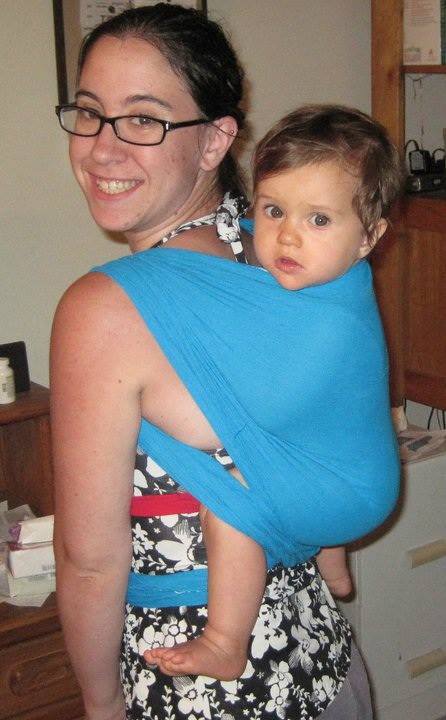
Functions like a woven wrap, but is not produced specifically for the purpose of babywearing. Some people have concerns about safety. Use would depend on your confidence about the suitability of the material. These are often homemade (DIY).
Pros: Often inexpensive and easy to find. You can customize it to the best length and width for you.
Cons: Many do not find them to be as comfortable as a typical woven wrap. Safety can be an issue. You can read about what materials are safe here.
Common Brands: Osnaburg fabric (can be purchased at any fabric store), Mahogany brand tablecloths.
Soft Structured Carrier aka SSC:
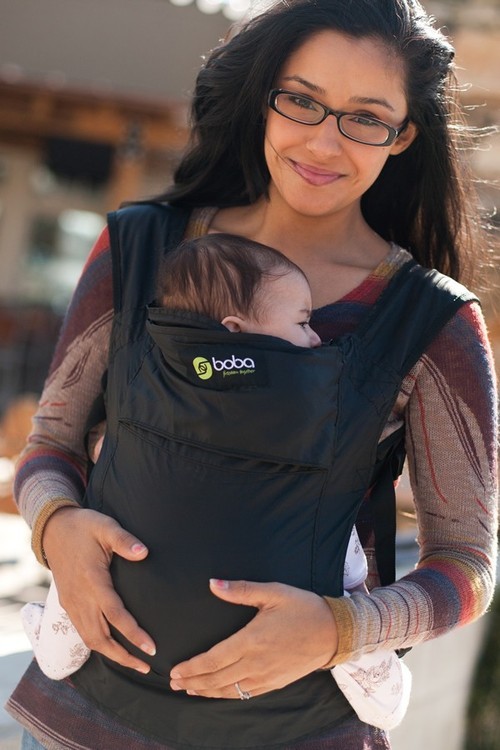
Similar in principle to a Mei Tai, but instead of having straps to tie, this carrier has buckles. Can be used for front and back carries. Avoids the problem of dangling straps in wet, muddy weather!
Pros: Easy to learn how to use, no straps dragging on the ground.
Cons: Sized, so fit depends on baby and mama size. It can be difficult for two people of very different sizes to share the same carrier. Most people have to size up as their child grows. Some people find buckles dig into them.
Common Brands: Beco, Boba, Ergo, Kinderpack, Tula
Stretchy wrap:
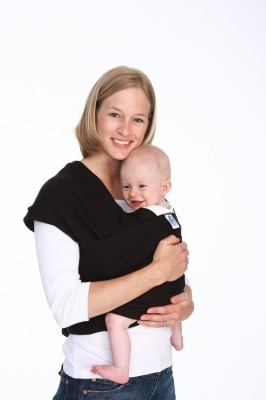
Common Brands: Beco, Boba, Ergo, Kinderpack, Tula
Stretchy wrap:

A length of stretchy knit fabric that is tied. Great for newborns and little babies, but can become less supportive as baby gets heavier (due to stretchy material). It is really only supportive for babies under 15 lbs. It is pre-tied onto the adult and the baby is then popped in and out throughout the day, without the need to re-tie. It is generally advised that this type of carrier is not suitable for back carries!
Pros: Great for newborns. Easy to pre-tie and make the carry “poppable”.
Pros: Great for newborns. Easy to pre-tie and make the carry “poppable”.
Cons: Not safe for back carries. Can only do a few carries. Warm and a lot of fabric. Not very comfortable after 15 lbs.
Common Brands: Boba Wrap, Moby Wrap
Woven wrap:
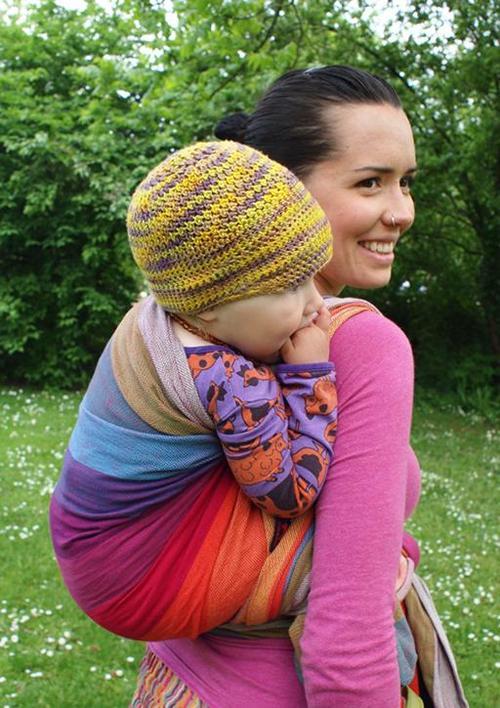
A length of woven fabric, sold in a variety of sizes, which is tied into place. Can be used to carry from newborn to preschooler. Is suitable for front, back or hip carries (of which there are a number of different carries).
Pros: Extremely versatile. There are countless carries you can do. Fits every mama and baby body type. Easy for wearers of different body types to share. You can use it for kids of different sizes/ages too.
Cons: There is a learning curve. Some woven wraps are expensive (but maintain their resale value). Longer wraps can drag on the ground while wrapping.
Common Brands: Didymos, Girasol, Kokadi, Natibaby, Storchenwiege
Wrap Conversion aka WC:
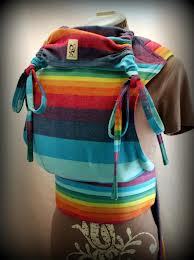
A carrier custom made out of woven wrap material. These are often done in the style of the Asian carriers mentioned, or a ring sling.
Pros: Visually stunning and usually custom orders. Offer the snuggly benefits of a woven wrap plus the convenience of a structured carrier or sling.
Cons: Can be expensive and difficult to get conversion slots.
Common Brands: Bamberoo, Dream Carrier, Obimama, Sleeping Baby Productions
Common Brands: Boba Wrap, Moby Wrap
Woven wrap:

A length of woven fabric, sold in a variety of sizes, which is tied into place. Can be used to carry from newborn to preschooler. Is suitable for front, back or hip carries (of which there are a number of different carries).
Pros: Extremely versatile. There are countless carries you can do. Fits every mama and baby body type. Easy for wearers of different body types to share. You can use it for kids of different sizes/ages too.
Cons: There is a learning curve. Some woven wraps are expensive (but maintain their resale value). Longer wraps can drag on the ground while wrapping.
Common Brands: Didymos, Girasol, Kokadi, Natibaby, Storchenwiege
Wrap Conversion aka WC:

A carrier custom made out of woven wrap material. These are often done in the style of the Asian carriers mentioned, or a ring sling.
Pros: Visually stunning and usually custom orders. Offer the snuggly benefits of a woven wrap plus the convenience of a structured carrier or sling.
Cons: Can be expensive and difficult to get conversion slots.
Common Brands: Bamberoo, Dream Carrier, Obimama, Sleeping Baby Productions
Carrier Comparison Chart
Types of Passes
1. Torso Pass
A Torso Pass goes over the baby and then under both of the wrapper’s arms.
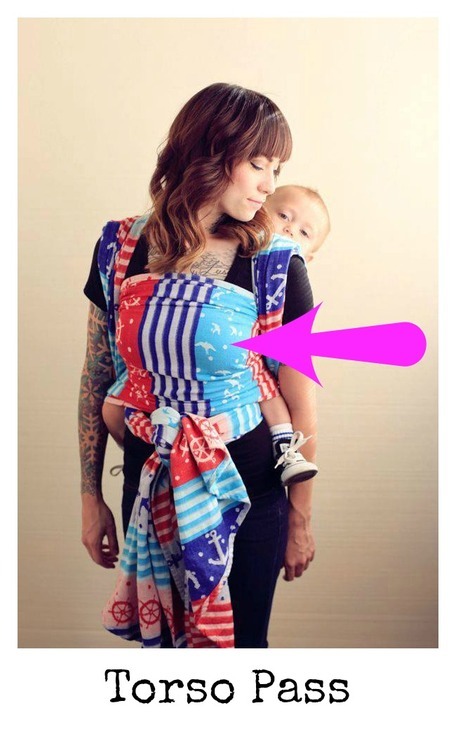
Pros: Binds the baby securely to the wrapper’s torso and provides full, closed support along the sides of the wrap
Cons: Limited ability to position the carry – because the wrap goes under both of the wrapper’s arms, the baby must be positioned at this level. Requires some effort/finesse to get an ideal knees above bum deep seat. Not ideal for leg straightening babies.
Common Carries: Double Hammock, Simple Torso Carry
2. Kangaroo/Ruck Pass
A Kangaroo or Ruck Pass goes over the baby and then over both of the wrapper’s shoulders.

Pros: Baby can be positioned at any point on the wrapper’s torso or back. High pass is good for keeping leaning babies secure. Encourages a deep, knees above bum seat.
Cons: Higher learning curve than a torso pass. Not ideal for leg straightening babies.
Common Carries: RUB, Kangaroo
3. Cross Pass
A Cross Pass passes over the baby on a diagonal, with one end going under the baby’s leg and under the wrapper’s arm and the other end going over the baby’s shoulder and then over the wrapper’s shoulder.
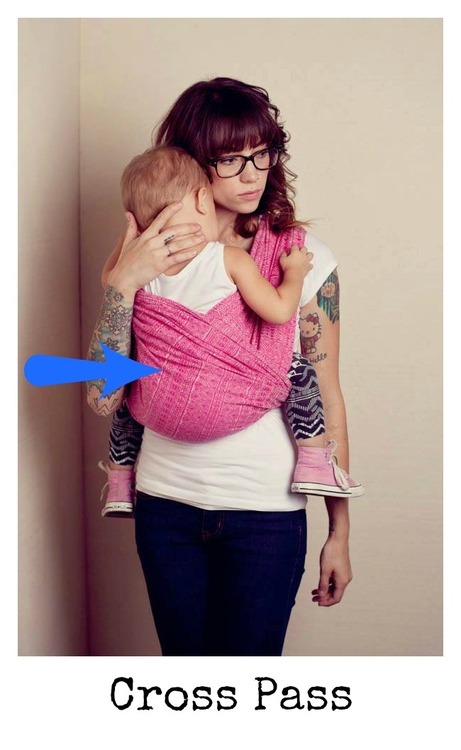
Pros: Good for pre-tieing and then popping the baby in and out of a carry. Also good for securing leg straightening babies.
Cons: Not ideal for leaning babies. Can be more difficult to get snug than other passes and tends not to distribute weight as evenly as other passes since the pass becomes bunched under the baby’s leg rather than remaining spread.
Common Carries: Front Wrap Cross Carry, Hip Cross Carry, Back Cross Carry
4. Rebozo Pass
A Rebozo Pass has one end going over the wrapper’s shoulder while the other end goes under the wrapper’s arm. Unlike a Cross Pass, a Rebozo Pass goes over both of the baby’s legs and stays high on his or her back.
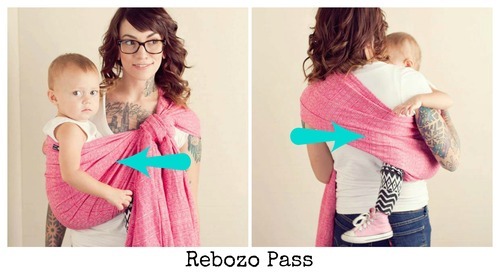
Pros: Hybrid of a Torso and Kangaroo Pass – offers closed support and security but allows more freedom to position the baby where the wrapper is most comfortable.
Cons: Not ideal for leg straightening babies.
Common Carries: Rebozo, RRRR
All wrap carries, front, back and hip are created from a combination of four types of passes: Torso, Kangaroo/Ruck, Cross, and Rebozo. Passes can be combined based on the needs of the wrapper and baby.
For example:
* a baby who has a tendency to lean might benefit from a Kangaroo/Ruck based carry.
* baby who tends to lean and leg straighten would need a combination of Cross and Kangaroo, Torso or Rebozo passes
* if a wrapper were looking for a quick, poppable carry, he or she might want to consider a Cross Pass based carry.
~Cross passes and Rebozo Passes can often be substituted for each other within a carry. So, if a wrapper is using a carry such as a Hip Cross Carry or Front Cross Carry the calls for two cross passes, but the baby being wrapped tends to lean, the wrapper could make one of the Cross Passes a Rebozo Pass instead in order to secure the baby.~
5. Reinforcing Pass
A Reinforcing Pass comes under the wrapper’s arm, across the baby diagonally, under the baby’s opposite leg and then under the wrapper’s opposite arm.
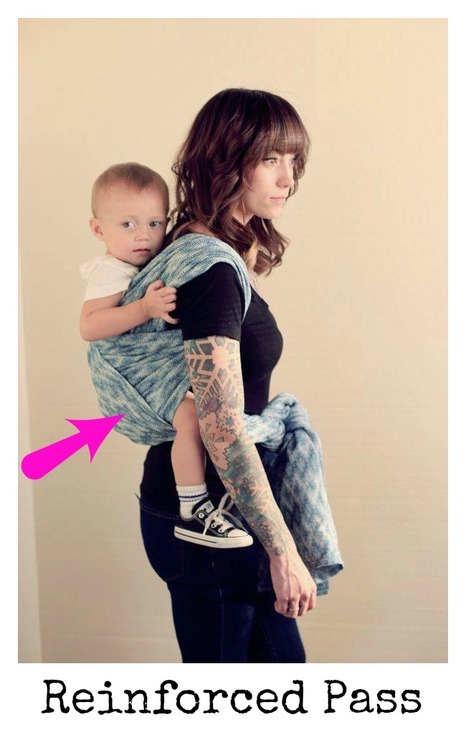
Pros: Adds additional torso support as well as securing against leg straightening.
Cons: Relatively low pass which then moves lower under the baby’s legs. Because of this, it is not used as a base pass for any carry, but is added for, as the name suggests, reinforcement.
Common Carries: Reinforced Ruck
6. Bunched Passes
For a Bunched Passes, the wrap is gathered or bunched into a strap which is then passed over the baby. Most commonly, bunched passes are brought over and then under the baby’s legs (also known as Safety Crosses)
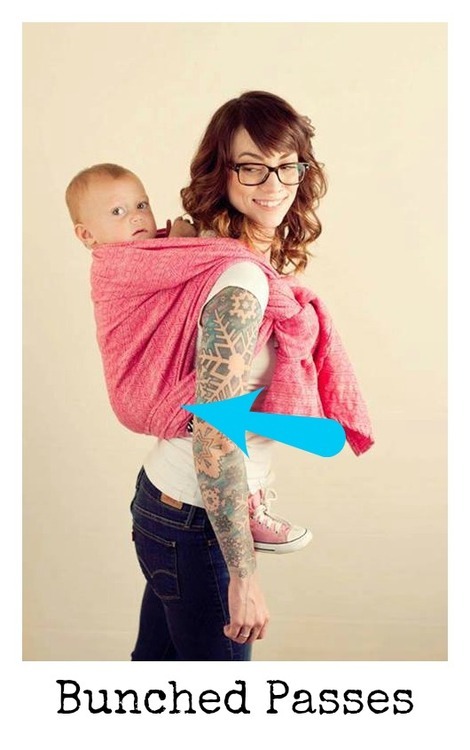
Types of Knots (some info used from TheBabywearer.com)
Square or Reef Knot
Square or Reef Knot
The Square or Reef Knot is the most often used knot in tying of wrap carries. It provides security as well as a relatively flat side against the wrapper’s body.
Slip Knot
The Slip Knot most commonly used in wrapping is a Girth Knot. This knot provides a flat side against the wrapper’s body and the ability to adjust the carry after wrapping.
Some find a reverse slip knot to be more adjustable:
Half Knot
A Half Knot is simply the first half of a square of reef knot. Wrapper’s will use a Half Knot with a wrap that grips itself well and is unlikely to slip. Often used in chest belts.
Common types of carries and their abbreviations
Click on the name of the carry to see a selection of tutorial videos.
Back Carries
Double Hammock- DH:
Click on the name of the carry to see a selection of tutorial videos.
Back Carries
Double Hammock- DH:
Two rebozo passes
- Off-centered Rebozo pass over baby on wearer’s back
- Using the end of the pass going under the wearer’s arm, spread Torso Pass across the chest
- Second Rebozo Pass over the baby
- Bring straps back under arms
- Bunched or spread reinforcing passes over then under baby’s legs
- Tie off in front
One rebozo, one cross and one torso pass
- Centered rebozo pass over baby on wearer’s back
- Using the end of the pass going under the wearer’s arm, flip back over the shoulder
- Cross Pass over baby
- With the other end of the wrap, come under the wearer’s arm
- Torso Pass over the baby
- Tie off in front
*There are variations of Jordan’s Back Carry with two cross passes or two rebozo passes depending on the leaning and/or leg straightening needs of the baby
One ruck pass
- Ruck Pass over baby on the back
- Bring straps back under the arms
- Spread reinforcing passes over then under baby’s legs
- Tie off in front
One ruck pass
- Ruck Pass over baby on the back
- Bring straps back under the arms
- Bunched passes over then under baby’s legs
- Tie off in front
One ruck pass
- Ruck Pass over baby on the back
- Bring straps back under the arms
- Tie under bum
One rebozo pass and two other passes
There are many versions of this carry and none seems to be particularly definitive. The defining characteristic seems to be the initial rebozo pass followed by a chest belt. From there, two passes follow, sometimes both spread, sometimes with one bunched, sometimes cross and reinforced passes, sometimes rebozo and torso passes. One possible version is presented here.
There are many versions of this carry and none seems to be particularly definitive. The defining characteristic seems to be the initial rebozo pass followed by a chest belt. From there, two passes follow, sometimes both spread, sometimes with one bunched, sometimes cross and reinforced passes, sometimes rebozo and torso passes. One possible version is presented here.
- Centered rebozo pass over the baby on the wearer’s back
- Half-knot chestbelt
- Using the end of the wrap coming up from the knot, pass back over the shoulder of the arm that the rebozo pass went under
- Cross pass over the baby
- Using the other end of the wrap, come under the wearer’s opposite arm
- Reinforcing Pass over then under baby’s leg
- Tie off in front
Front Carries
Two cross passes
- Bunched Torso Pass in Back
- Cross in Front
- Bring wrap over the wearer’s shoulders and cross in back
- Tie off in front
- Spread inside cross and load baby with wrap going over one leg and under the other to create a cross pass
- Repeat with outside cross
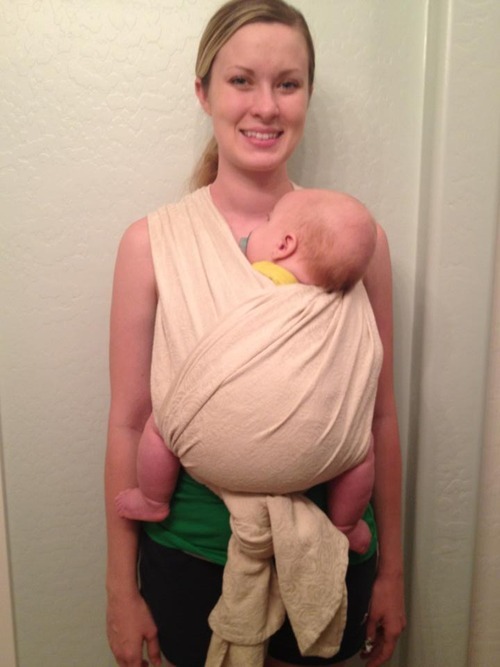
One torso pass and two cross passes.
- Torso Pass
- Cross in Back
- Two Cross Passes, either spread or bunched
- Tied in Back
One kangaroo pass
- Kangaroo Pass
- Flip Shoulders
- Cross in Back
- Cross over baby’s legs and tie in front
Common Variation –
- Kangaroo Pass
- Flip Shoulders
- Cross in Back
- Reinforcing passes, either spread or bunched
- Tied in Back
Rebozo pass and torso pass
- Centered rebozo pass over baby at the wearer’s front or hip
- Loop the end of the wrap coming across the chest under and then over the end of the wrap coming around the back and over the shoulder
- Bring the end of the wrap coming over the shoulder down to the waist and under the same arm around to the back
- Bring the end of the wrap coming across the chest back across the baby, creating a Torso Pass
- Tie off behind back
Rebozo pass
- Off-centered rebozo pass around baby on wearer’s front or hip
- Loop the end of the wrap coming across the chest over and then under the end of the wrap coming from behind the back and over the shoulder
- Return over the shoulder end of the wrap back around the back and cross over the baby’s leg
- Bring the end of the wrap coming across the chest back across and cross over the baby’s other leg
- Tie under the baby
Common Variation
- Off-centered rebozo pass over baby on wearer’s front or hip
- Loop the end of the wrap coming across the chest over and then under the end of the wrap coming from behind the back and over the shoulder
- Return over the shoulder end of the wrap back around the back and cross over the baby’s leg
- Bring the end of the wrap coming across the chest back across and cross over the baby’s other leg
- Cross ends of the wrap creating either bunched or spread Reinforcing Passes
- Tie off at the opposite hip
Chest Belt: CB
Lexi Twist
Tied At Shoulder: TAS
Tied Tibetan: TT
Tied Under Bum: TUB
WOVEN WRAP SIZES:
Long wraps:
Size 8: 5.7m
Size 7: 5.2m
Size 6: 4.7m
Mid-length wraps:
Size 5: 4.2m
Size 4: 3.7m
Shorties:
Size 3: 3.2m
Size 2: 2.7m
Popular woven wrap brands:
Artipoppe: Aka Arti. A very high end boutique brand that requires intense stalking to obtain a wrap. Very limited and only a handful of wraps per design/colorway released. They usually hit the secondary market at far above retail prices. See photos of some popular Artipoppe wraps here.
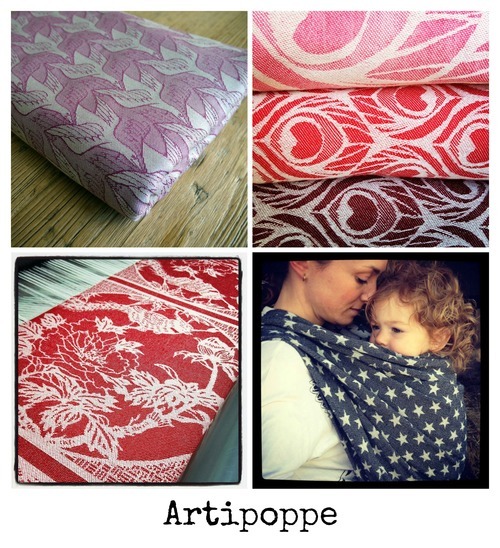
BBslen: Inexpensive, wide and sturdy. Great for toddlers (and for newborns too). Most are on the thinner side. See photos here.
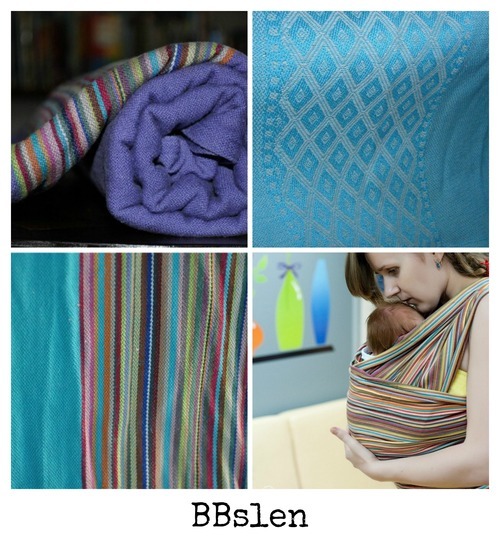
Colimacon + Cie: Aka C+C. Inexpensive and soft straight out of the bag. Thin and great for summers. Comes in solid colors only.
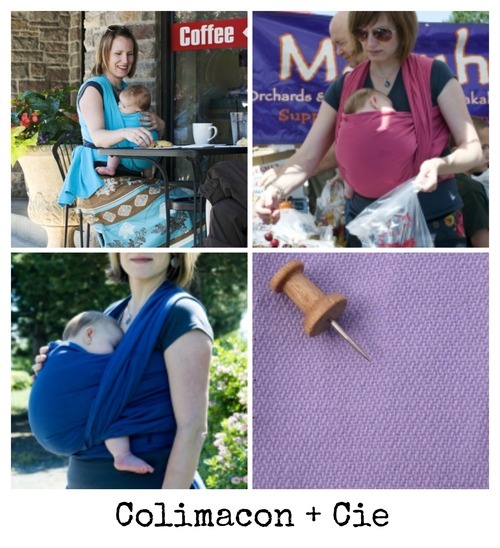
Didymos: Aka Didys. The classic wrap company. Didymos has something for everyone. They release wraps in a variety of thicknesses, colors, fibers (cotton, linen, hemp, silk, wool, etc), and weaves (indios, stripes, jacquards). They release wraps regularly and have both a standard line and limited edition releases. See photos of some popular Didymos wraps here.
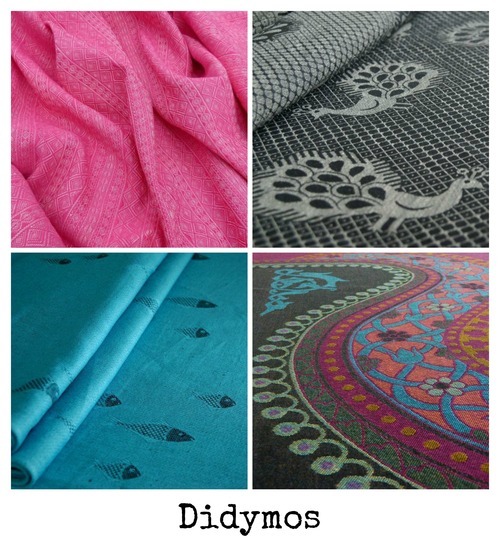
Diva Milano: Aka Divas. Elegant wraps with a high retail price. Soft straight from the bag and thin. They release in limited edition collections a few times a year. See photos of some popular Divas here.
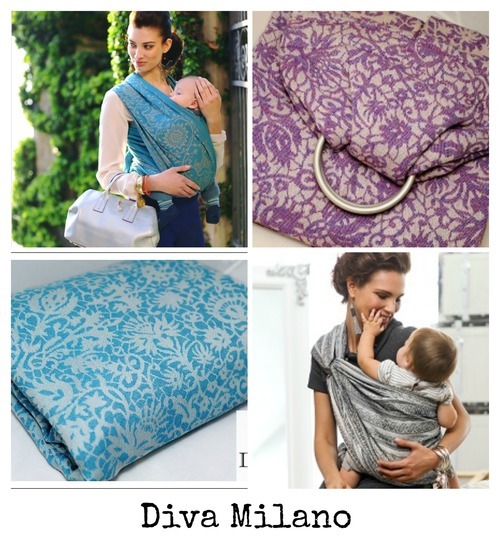
Girasols: Aka Giras. Handwoven wraps with a reasonable price tag. Medium thin and very blankety. Comes in twill weave and diamond weave and solid colors and stripes. Many colorways are exclusive limited editions through one or several retailers. Great for newborns, but many do not find Girasols supportive for toddlers. See photos of some popular Girasols here.
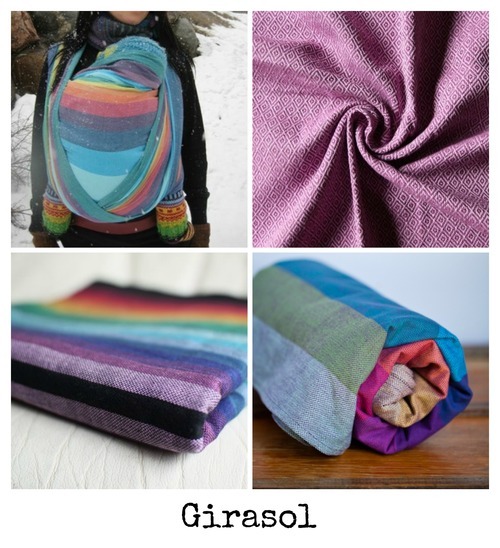
Ellevill: Thin wraps with long tapers. Their main lines are zaras, jades, and paisleys. Some are limited editions. They offer cotton, linen, silk, wool, and bamboo blends. See photos of some popular Ellevill wraps here.
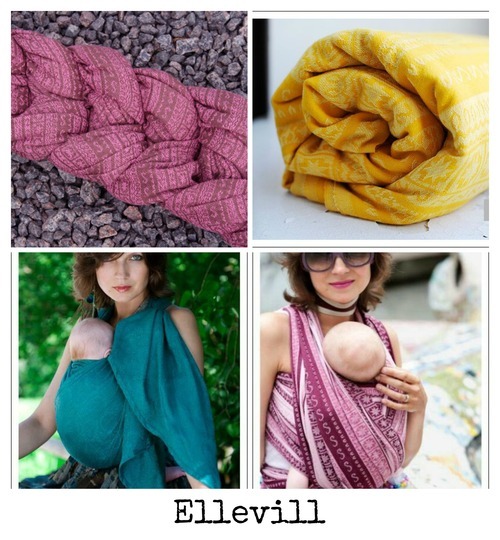
ETLA: A boutique handwoven brand that is quite hard to find. Usually sells for above retail on the secondary market.
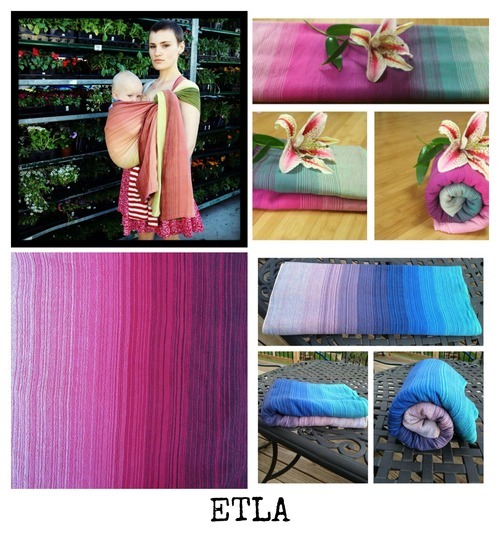
Heartiness: Aka Hearti. A boutique brand offering mostly high-end handwovens, but also some very low cost machine wovens.
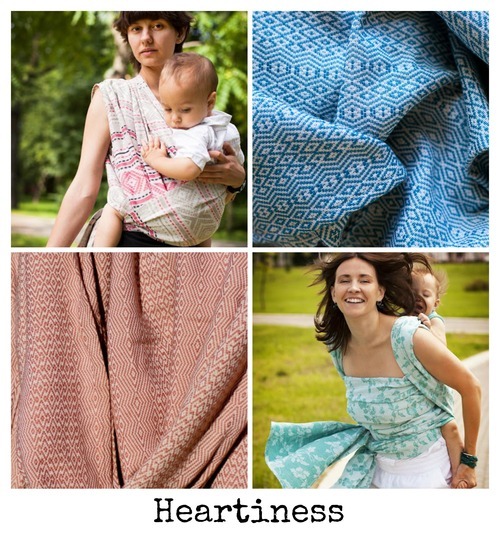
Hoppediz: Aka Hopps. Medium to thick wraps (thickness varies by colorway). Can take time to break in, but they make excellent workhorse wraps. Usually on the inexpensive side. See photos of some popular Hopps here.
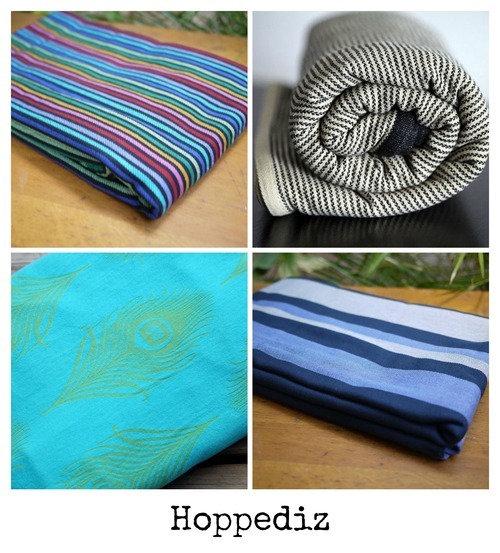
Kokadi: Aka KKD. Thin to medium thin wraps that usually feature playful, cute patterns. Most are limited edition and some require stalking. Most are soft straight out of the bag. Cotton and hemp are popular fibers used by Kokadi. Some sell for above retail on the secondary market, but most stay at or around their retail value. See photos of some popular Kokadi wraps here.
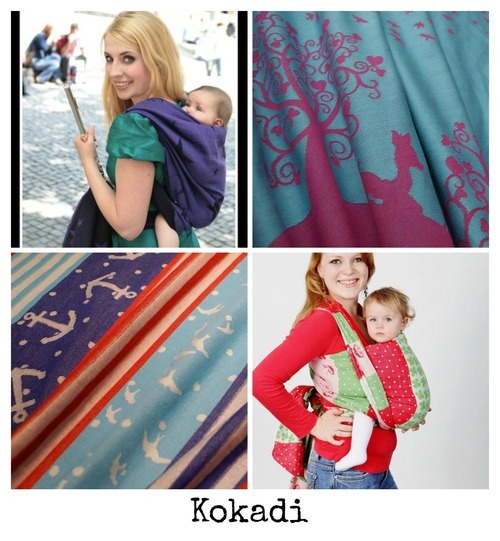
Natibaby: Aka Nati. Nati offers a huge variety of patterns and blends. They often release the same pattern in different colors and blends. They offer cotton, linen, hemp, bamboo, silk, and wool blends. Most are limited edition releases but usually do not require stalking. Most Natis are wide and often (but not always) on the medium to thick side. See photos of some popular Natibaby wraps here.
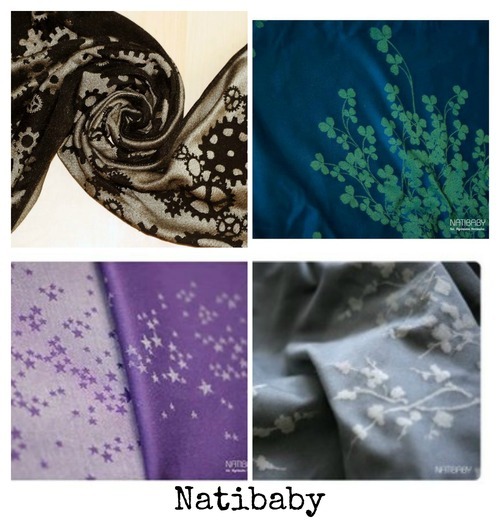
Oscha: Releases limited edition wraps that usually requires “stalking” or entering draws. Offers a variety of fibers, patterns, and colorways. A favorite among wrap collectors. See photos of some popular Oscha wraps here.
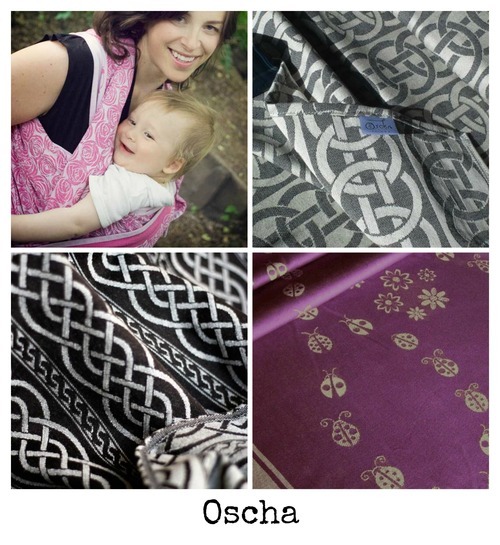
Pavo: A completely made in America boutique wrap company. Requires stalking. Wraps are very limited and patterns are only made in a few colorways before retired. Usually sell for above retail on the secondary market. See photos of some popular Pavo wraps here.
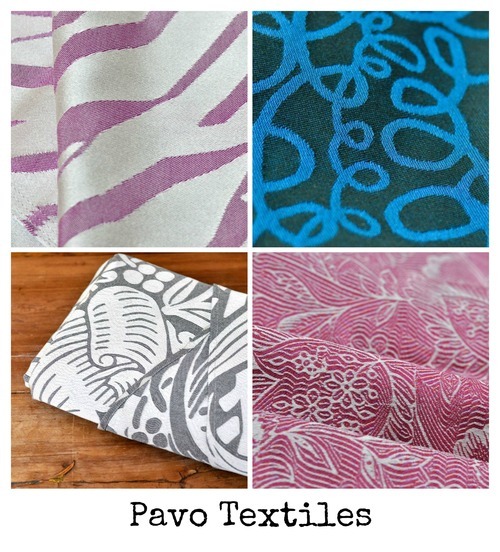
Storchenwiege: Aka Storch. An inexpensive workhorse wrap great for newborns through toddlers. They come in stripes and the “Leo” diamond weave. Stripes are harder to break in. Leos are often recommended to those looking for a single wrap to take them through their babywearing days and as the perfect beginner wrap. Most are medium thick. See photos of popular Storchenwiege wraps here.
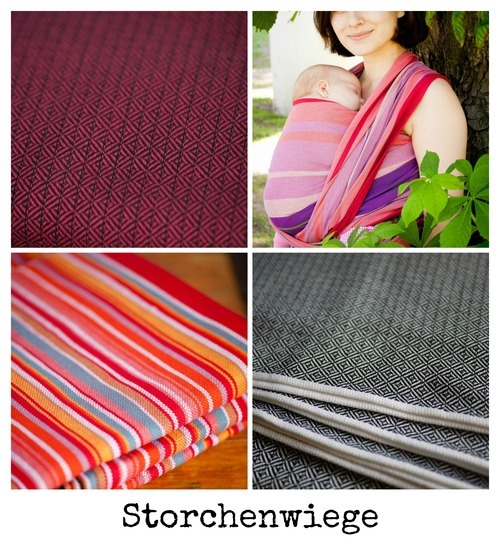
Uppymama: Aka Uppy. A boutique handwoven company. Their wraps are very hard to get your hands on, especially at retail prices. Their wraps are currently sold through drawings and via auctions. They hit the secondary market at prices far above retail.
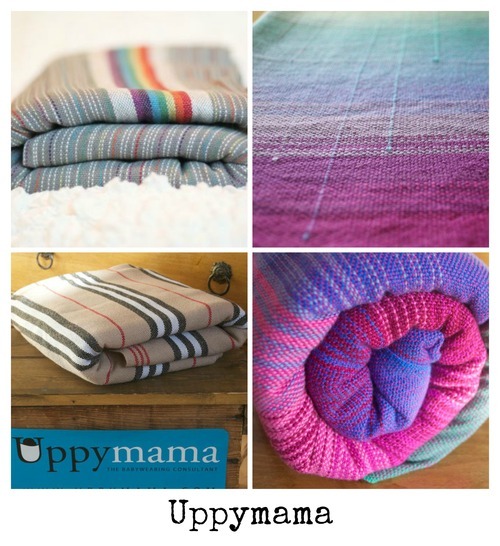
Vatanai: Aka Vat. Thin wraps that are soft, easy to wrap with, and great for beginners and hot weather. Usually have long tapers. Most Vats are machine woven and on the inexpensive side, but Pamirs (a handwoven Vatanai wrap) sell via auction often for $1000+. See photos of popular Vatanai wraps here.
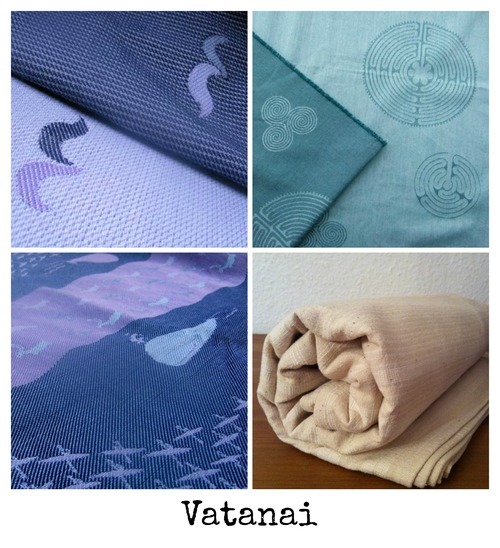
Common babywearing acronyms and terms:
ABC: Action Baby Carrier (brand of SSC)
ABC: Action Baby Carrier (brand of SSC)
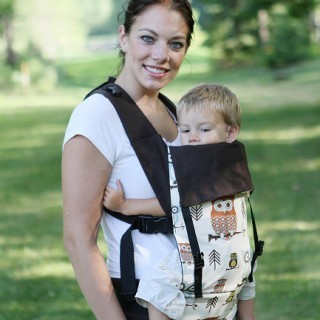
Airy: An attribute given to a woven wrap describing how closely compacted the weave of the wrap is. (Opposite of dense).
AP: Angelpack (brand of SSC), Attachment Parenting, or Artipoppe (brand of woven wrap).

ASTM: American Society for Testing and Materials. An international standards organization. All carrier and wrap makers will be required to meet ASTM standards and submit samples for testing starting in 2014.
B’roo: Bamberoo (conversion maker)
B’roo: Bamberoo (conversion maker)
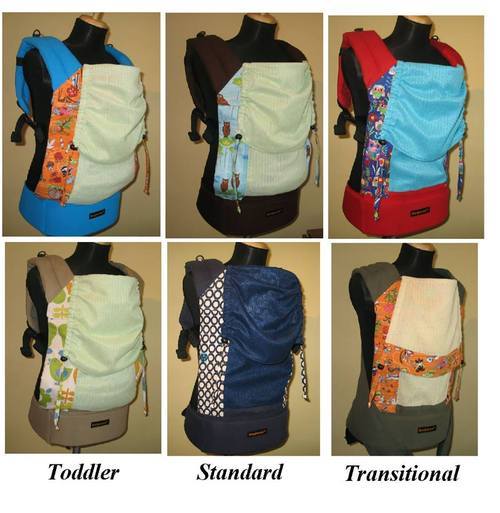
BB: Beco Butterfly (name of SSC carrier)
BBI: Beco Butterfly I (name of SSC carrier)
BB2/BBII: Beco Butterfly II (name of SSC carrier)
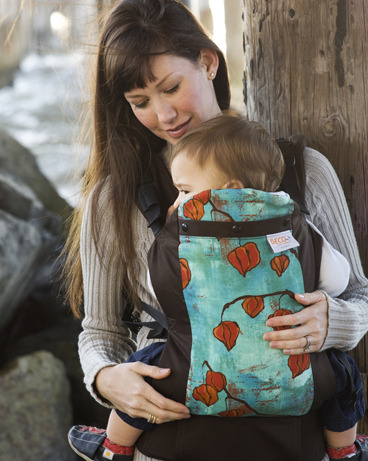
BCIA: Baby Carrier Industry Alliance. Helps manufacturers meet industry standards.
BF: Breastfeeding
BH: Baby Hawk (Brand/name of MT carrier)
BF: Breastfeeding
BH: Baby Hawk (Brand/name of MT carrier)
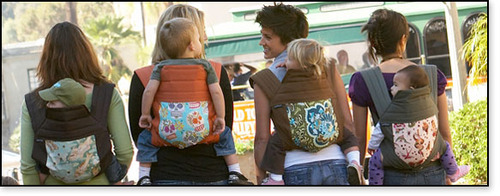
BHOS: Baby Hawk Oh Snap (name of SSC carrier)
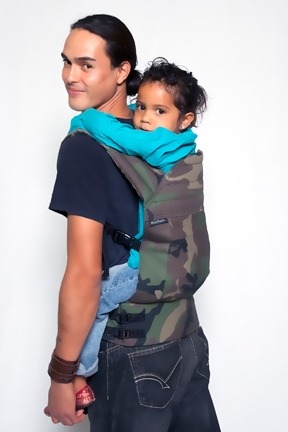
BLS: Babywearing Love and Support, a Facebook group dedicated to babywearing
BN: Brand New
BNIB: Brand New In Box
BNIP: Brand New In Package
BNWT: Brand New With Tags
Bounce: An attribute given to a woven wrap to describe how much ‘give’ it has, or how much the baby ‘bounces’ up and down with walking motion.
BR: Birdie’s Room (vendor)
Broken Thread: A thread that has been snagged and broken. Instead of a loop like a pull, it would be a single thread or a collection of single threads. Usually harmless, especially just a single broken thread, but a lot of broken threads in one small area of a wrap can turn into a hole. See this tutorial on fixing a broken thread.
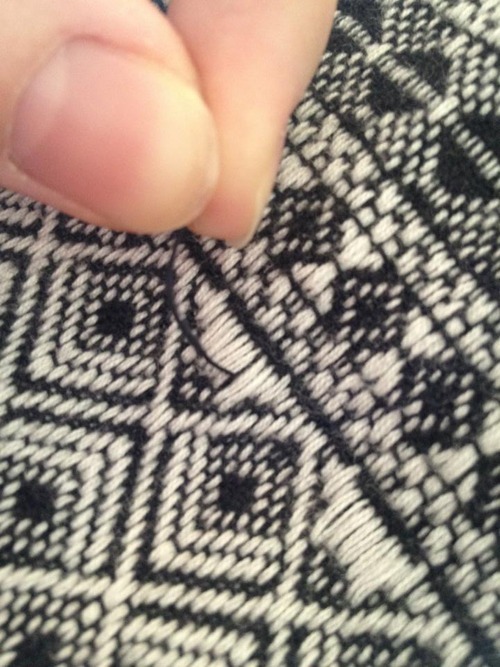
Bump: A common thing to type when trying to push a post to the top of the page.
BW/BWing: Babywear/babywearing
B/W: Black and White
C&C: Colimacon et Cie (brand of woven wrap)
BW/BWing: Babywear/babywearing
B/W: Black and White
C&C: Colimacon et Cie (brand of woven wrap)
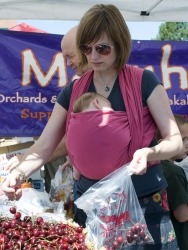
CCCB: Candy Cane Chest Belt
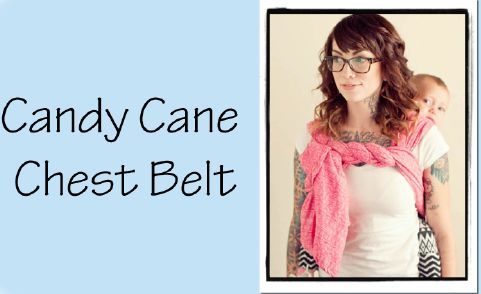
Chickens: Term used to refer to a series of wraps with peacocks on them made by Didymos.
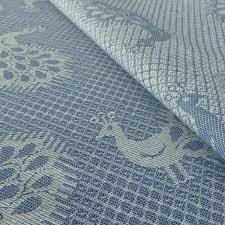
CISO: Casually In Search Of
Conversion: A woven wrap is used (converted) to make a MT, SSC, or RS
CPSC: Consumer Product Safety Commission. The government agency that enforces the CPSIA.
CPSIA: Consumer Product Safety Improvement Act. It is important and legally required for baby carrier makers to be CPSIA compliant.
Cush: An attribute given to a woven wrap to describe how cushiony or padded the wrap feels on the wearer’s shoulders.
DC: Dream Carrier (conversion maker)
Cush: An attribute given to a woven wrap to describe how cushiony or padded the wrap feels on the wearer’s shoulders.
DC: Dream Carrier (conversion maker)
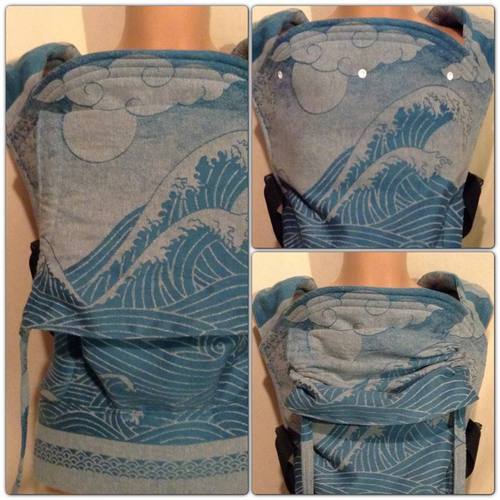
Dense: An attribute given to a woven wrap describing how closely compacted the weave of the wrap is. (Opposite of airy)
DH: Double Hammock (type of carry) or Darling Husband. You can find instructional videos for double hammock here.
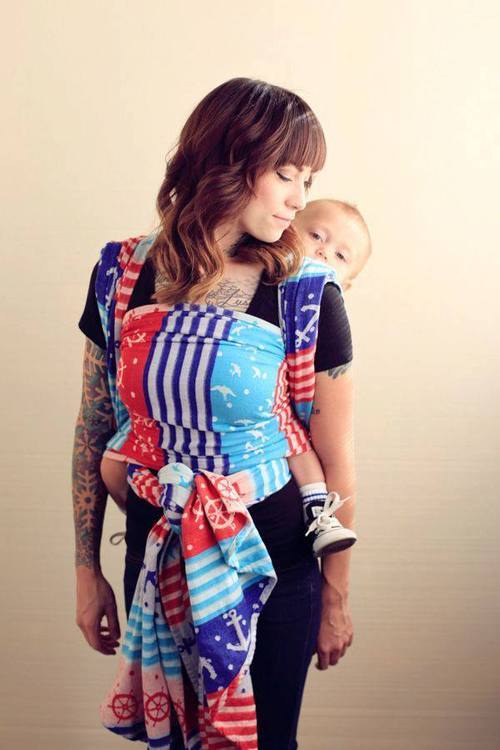
Didy: Didymos (brand of woven wrap). See photos of popular Didymos wraps here.
DISO: Desperately In Search Of
ETF: Easy to Find
EUC: Excellent Used Condition
Faux Pfau: A nickname for a tablecloth made by the Mahogany brand that has peacocks reminiscent of the Didymos pfauen. A popular DIY material.
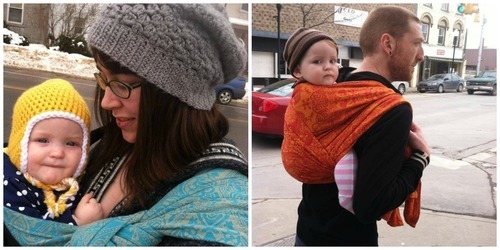
FB: Full Buckle, Facebook, or Feedback
Felting: Damage to a wool carrier caused by improper washing practices wherein the fibers are overly agitated and end up drawing together and matted. It can also be caused by water temperatures that are too hot or too cold. Results in a wrap shrinking in width and getting very fuzzy. It usually loses all stretch as well. A felted wrap is not safe to use. The wool fibers become brittle and cannot hold up to the weight of a baby.
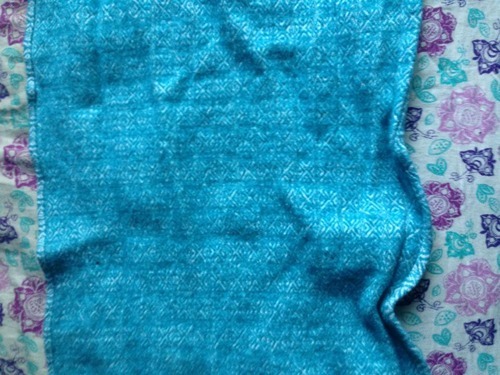
Fergo: A nickname for a counterfeit Ergo. Read about why they are bad here.
FFS: Free for Shipping
Flannelly: An attribute given to a woven wrap used to describe a soft, fuzzy, warm feeling wrap.
FSOT: For Sale Or Trade
FS: For Sale
FSO: For Sale Only (no trades)
FT: For Trade
FTO: For Trade Only (not looking to sell)
Grad/Grad dye: Gradiation dye style in which the carrier is dyed in an ombre style
Flannelly: An attribute given to a woven wrap used to describe a soft, fuzzy, warm feeling wrap.
FSOT: For Sale Or Trade
FS: For Sale
FSO: For Sale Only (no trades)
FT: For Trade
FTO: For Trade Only (not looking to sell)
Grad/Grad dye: Gradiation dye style in which the carrier is dyed in an ombre style
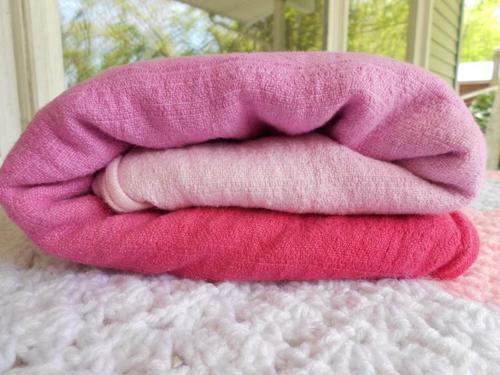
GN: Gender Neutral
GUC: Good Used Condition
Gira: Girasol (brand of woven wrap)
GMBB: Gypsy Mama Bali Breeze (brand of woven wrap)
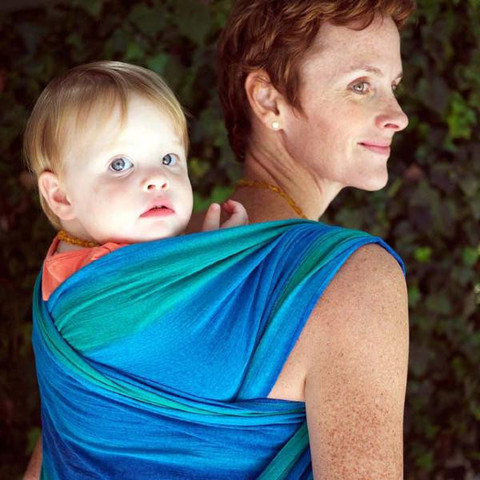
Grippy: An attribute given to a woven wrap used to describe how much it sticks to, or slips easily over itself when trying to slide passes. The more it sticks, the grippier it is. (Opposite of slippery).
GSW: German Style Woven Wrap
HB: Half Buckle
Hopp: Hoppediz (brand of woven wrap). See photos of popular Hopps here.
HSA: Highly Sought After
HTF: Hard to Find
IHA: I have already/available
Indio: A woven wrap with a particular weave made by Didymos
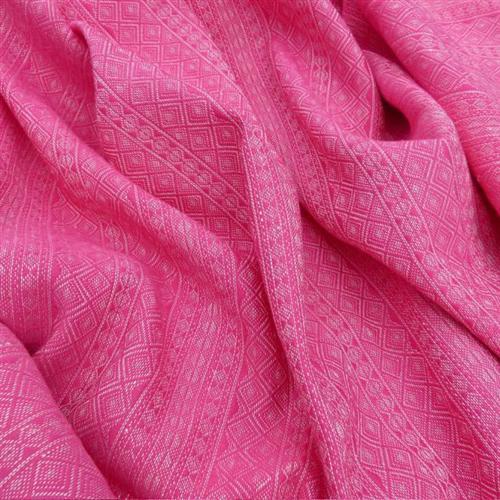
ISO: In Search Of
ITW: In The Works
IVDSO: In Very Desperate Search Of
KP: Kinderpack (brand of SSC)
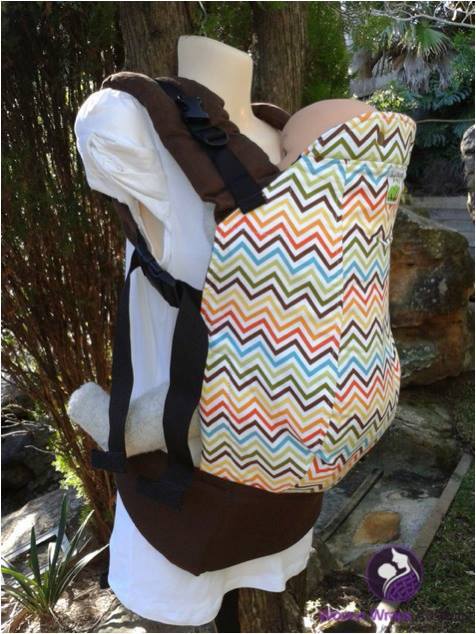
LE: Limited Edition
Leg Straightener: Some babies like to lock and straighten their legs, almost as if they are trying to stand up in the wrap. This can cause the baby to ‘pop’ their seat, which means the bottom rail of the wrap comes out from behind their knees and rides up their back leaving them without a hammock to sit in and their bums exposed.
Legacy: A term used to refer to a wrap that the wearer plans on passing down to their child for future generations of babywearing.
Lexi Twist: Can be used with a woven wrap or mei tai. A twist is created either under the baby’s bum, or low on their back to provide more support.
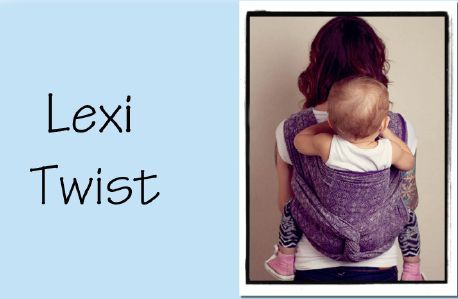
LL: Lenny Lamb (brand of woven wrap)
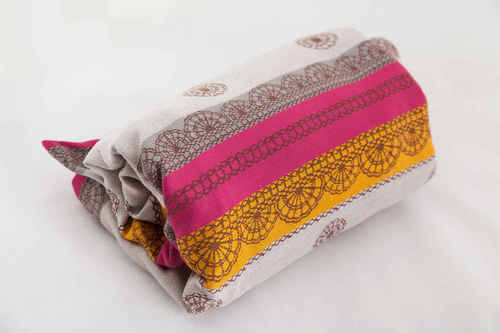
LO: Little one (aka child).
MM: Marsupial Mamas (vendor); Middle Marker (A tag marking the middle of the wrap).
MMAO: Make Me An Offer
MMARO: Make Me A Reasonable Offer
Moldable: An attribute given to a woven wrap to describe how it feels when wrapped. The more a wrap feels like a second skin, or feels like it forms to you and your baby like shrink wrap, the more moldable it is.
Mr. P: Pamir (a woven wrap made by Vatanai)
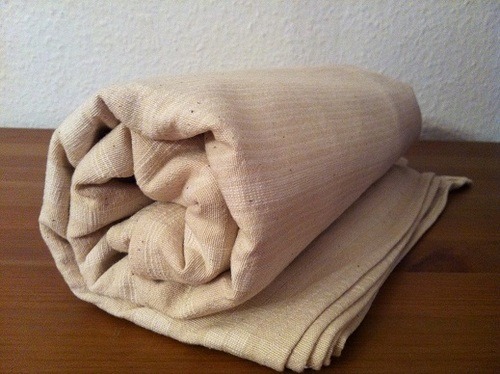
MT: Mei Tai (pronounced may tie)
MV: Market Value. The average price a carrier sells at on the secondary market (can be higher or lower than retail).
Nati: Natibaby
Natty: Natural (undyed). Refers to the color of the yarn.
NBC: Narrow-based carrier, sometimes called a crotch dangler (though we discourage that term). Many popular mainstream carriers fall under this category, such as the Bjorn and the Snugli. It does not place the baby in the recommended seated ergonomic position. Though not unsafe, they are not ideal.
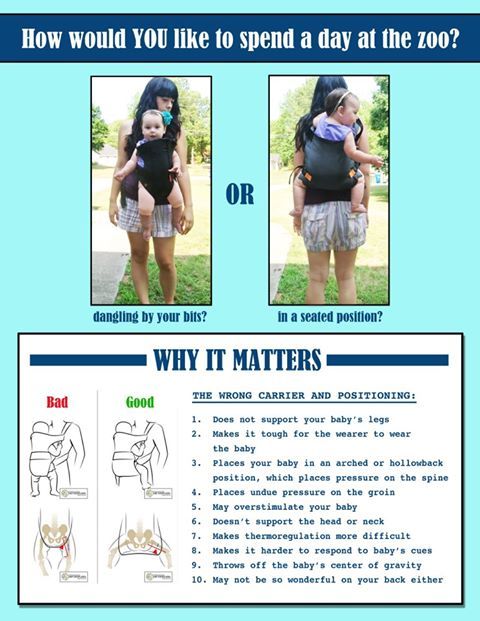
NIP: Nursing In Public
NM: Natural Mamas. A UK based babywearing internet forum.
Nub: A lump, or thick place in the yarn of a woven wrap that occurs commonly in the weaving process. A common flaw, especially in handwoven and hemp and linen blends. It is purely a cosmetic flaw and does not affect safety.
Nub: A lump, or thick place in the yarn of a woven wrap that occurs commonly in the weaving process. A common flaw, especially in handwoven and hemp and linen blends. It is purely a cosmetic flaw and does not affect safety.

O&A: Olives & Applesauce (conversion maker)

Obi: Obimama (conversion maker)
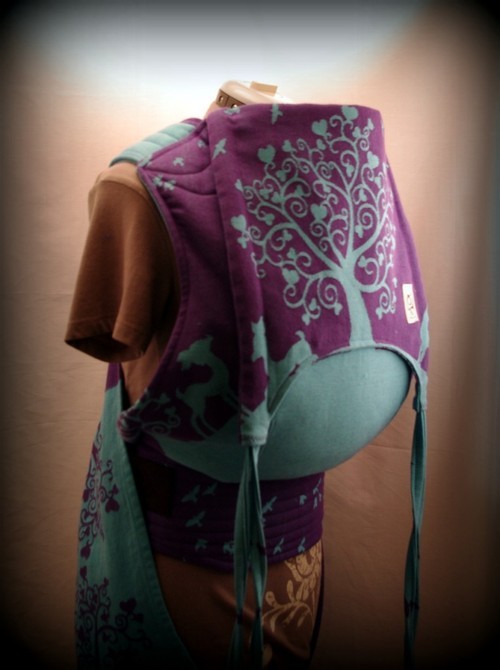
OBO: Or Best Offer
Onbu: Onbuhimos
OOAK: One of a Kind
OP: Original Poster
Oscha: A brand of woven wraps. You can find photos of popular Oscha wrapshere.
OT: Off topic. A poster often puts this in front of a post that is off the main topic of the group.
OTW: On the way.
Permacrease: A flaw of permanent creasing in a woven wrap. Usually harmless, though it is important to check for further wear in the area.
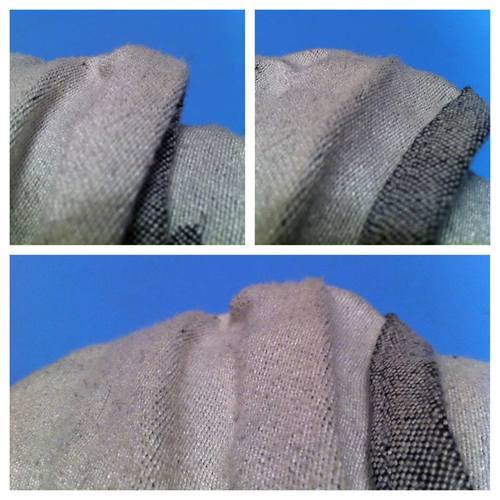
Permastash: A designation given to a carrier that the owner never plans to sell or trade.
PFA: Perfect Fit Adjusters (In reference to Kinderpack straps). PFAs cinch down the straps even more than the regular buckles. Standard sized straps with PFAs cinched down end up being smaller than petite straps, while plus straps with PFAs cinched down are a similar size to standard straps. Perfect for sharing a carrier with two wearers of different body types.
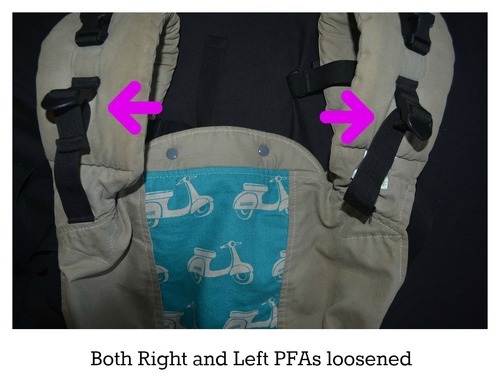
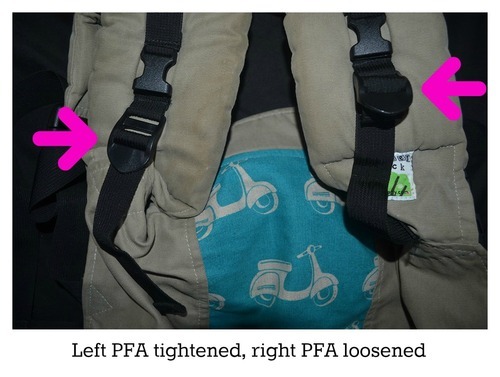
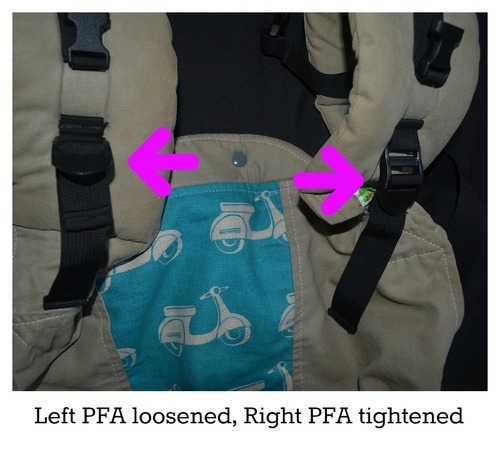

PM: Private Message
PP: PayPal
PPD: Postage Paid Domestic
PP Tree: A term used to refer to money in PayPal funds.
Pod: Podegai
Popped Seat: Some babies like to lock and straighten their legs, almost as if they are trying to stand up in the wrap. This can cause the baby to ‘pop’ their seat, which means the bottom rail of the wrap comes out from behind their knees and rides up their back leaving them without a hammock to sit in and their bums exposed.
Pull: Short for pulled thread. A loop of yarn that has been pulled up in the fabric due to snagging. A common, harmless cosmetic flaw which can be easily fixed (see this tutorial for fixing a pull).

RS: Ring Sling
Reinforced: When the cross passes are spread across the baby’s back as opposed to remaining bunched ‘straps’.
Reinforced: When the cross passes are spread across the baby’s back as opposed to remaining bunched ‘straps’.
Rebozo: A form of tying a woven wrap which, in contrast to the ruck, takes the wrap over one shoulder (then back under), but, on the opposite side under the armpit and back over the shoulder. It is also another name for a short wrap.
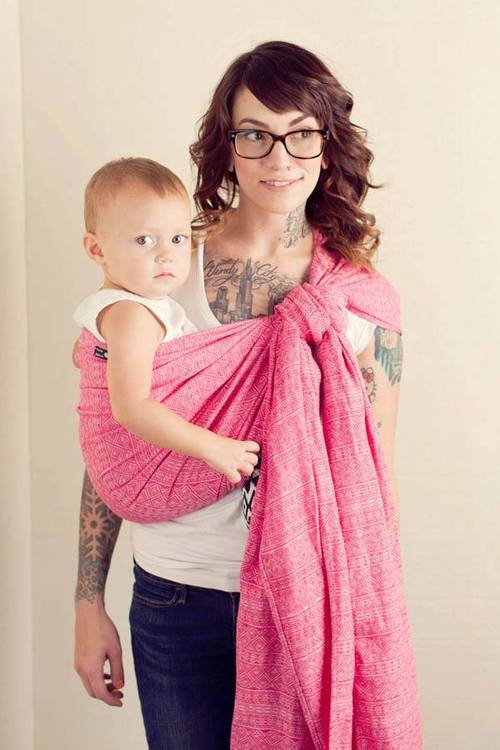
Ruck Straps: The part of the wrap that goes over your shoulders like backpack straps.
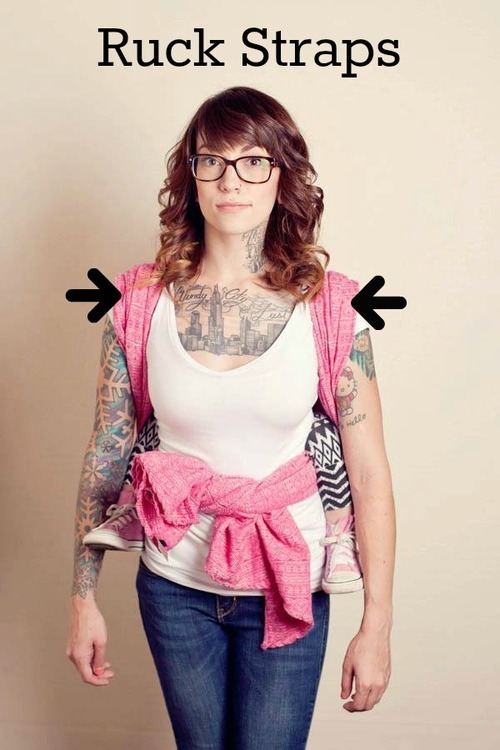
Saggy: An attribute given to a woven wrap meaning that the wrap doesn’t hold its shape when wrapped and the baby changes position. Wrap sagging often becomes uncomfortable quickly for the wearer. (See: Supportive)
Slippery: An attribute given to a woven wrap used to describe how much it sticks to, or slips easily over itself when trying to slide passes. The easier the passes slide, the slipperier it is.
SB: Sakura Bloom
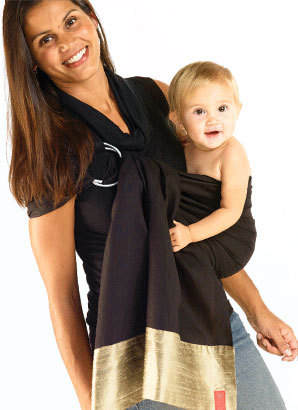
SBP: Sleeping Baby Productions (Ring Sling conversions)
Shorty: A short woven wrap, usually a size 2 or 3. You can find common shorty carries here.
Sling Rings: A brand of safe, tested rings made specifically for babywearing. Can be used to turn a short woven wrap into a No Sew Ring Sling. You can purchase them at Slingrings.com
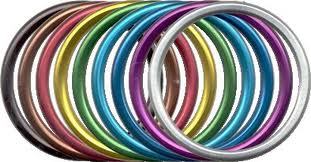
Slub: A lump, or thick place in the yarn of a woven wrap that occurs commonly in the weaving process. There are many slubs in the picture of Caribe below (the black threads poking out of the blue weave).
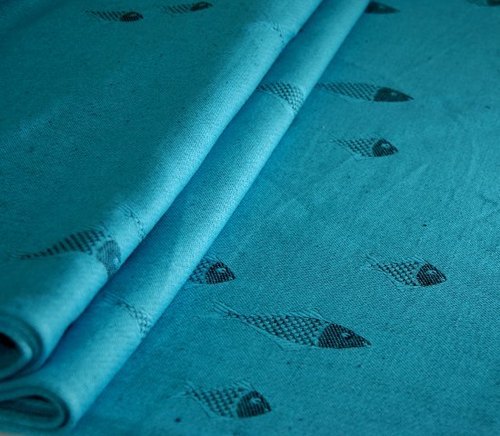
SN: Starry Night (a wrap pattern made by Oscha)
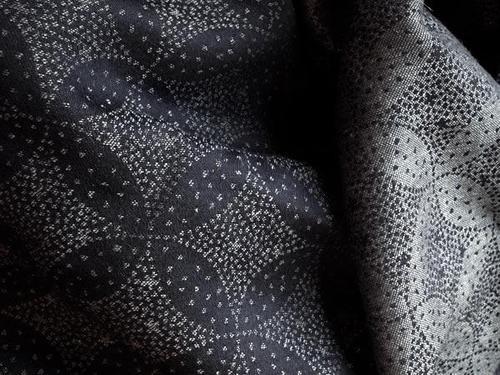
SPOC: Simple Piece Of Cloth
Squish: A term used to refer to newborn babies. They’re just so squishy and adorable!
SS: Screen Shot or Stash Shot (a photo of all of your carriers).
SSC: Soft Structured Carrier
SSS: Stash Shot Saturday
STIH: Soft tape in hand
Storch: Storchenwiege (brand of woven wrap).
STIH: Soft tape in hand
Storch: Storchenwiege (brand of woven wrap).
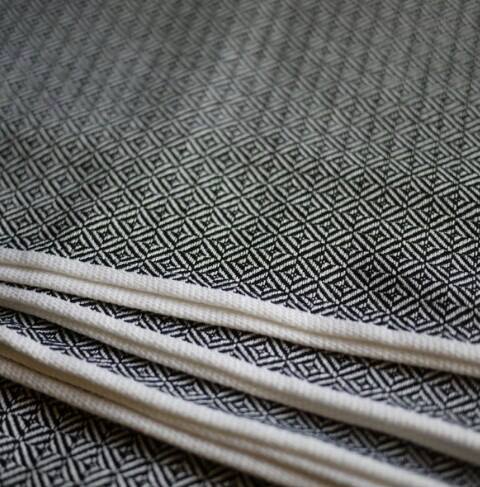
Sub: Subscribe. Something a poster writes in the comments when they want to follow the thread.
Supportive: An attribute given to a woven wrap used to describe how well it carries the weight of the child and maintains its shape during use. More supportive wraps allow the wearer to to wear a heavier baby for longer without discomfort (The opposite of supportive is: Saggy)
TBW: The Baby Wearer, an extensive and comprehensive internet forum dedicated to all things babywearing. http://www.thebabywearer.com/
TAS: Tied At Shoulder. Refers to where the knot is tied in a carry.
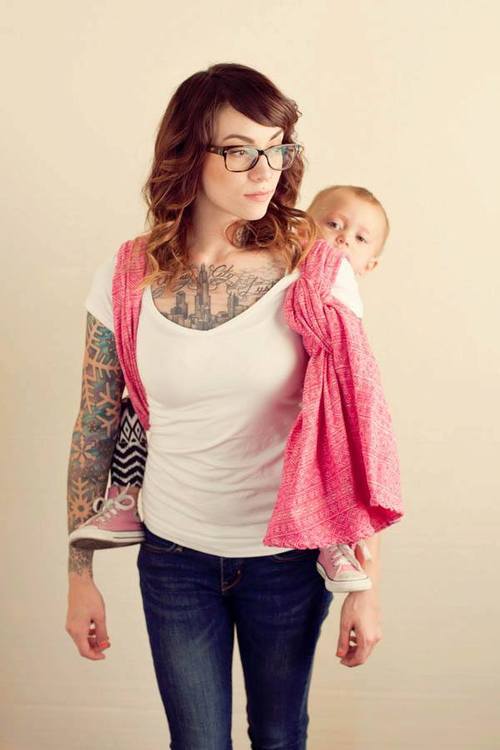
TC or TCMT: Tablecloth or Tablecloth Mei Tai if converted. Some woven tablecloths can be used as DIY wraps.
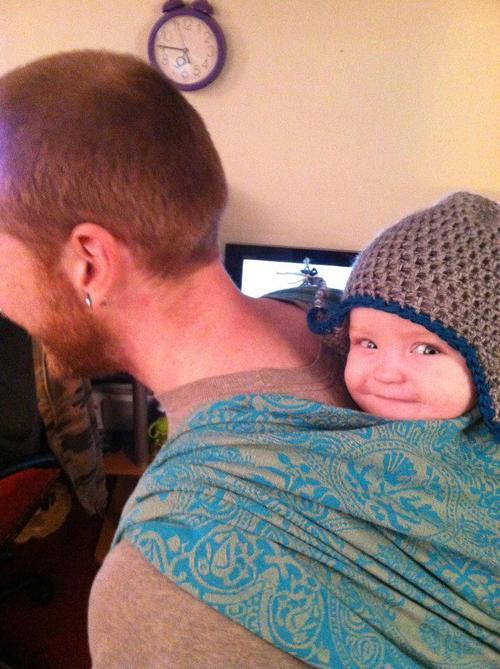
TDF: To Die For
TH: ToddlerHawk (name of SSC). A toddler sized Babyhawk.
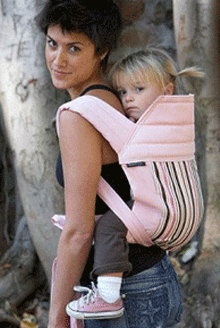
TIOT: Try It Out Tuesday. A day where we try out a new carry and share pictures.
The Swap: A common way to refer to The Babywearing Swap, a Facebook group to buy, sell and trade baby carriers.https://www.facebook.com/groups/thebabywearingswap/?fref=ts
Thick/thin: Attributes used to describe a woven wrap. From wovenwrapsdatabase:
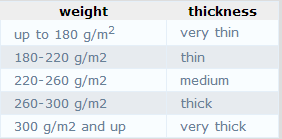
Thread Shifting: A flaw where parts of the weave shift or move leaving thin spaces, or gaps in the wrap. More common in loose weaves. Can be caused or worsened by spin cycles.
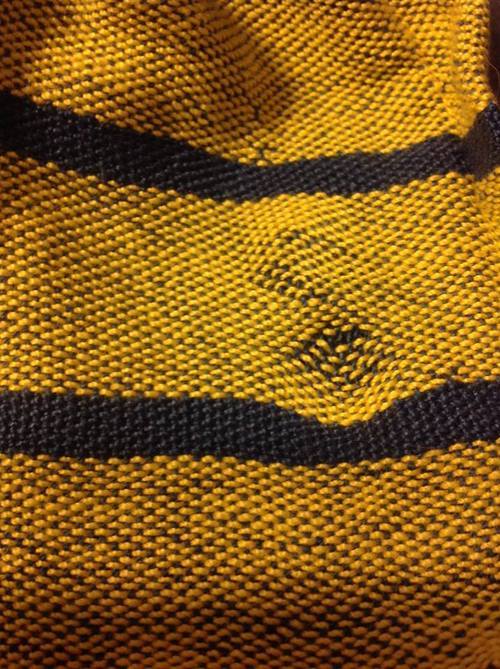
TMD: The Mommy Dialogues (vendor) or Two Mommas Designs (conversion maker)
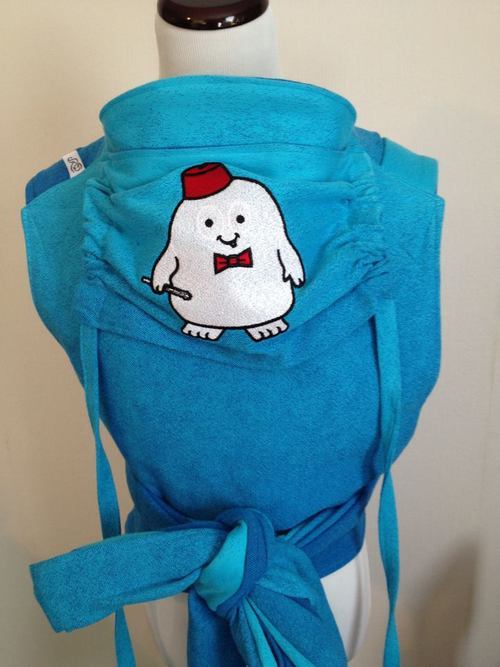
TT: Tied Tibetan. A term used to describe the way wrap tails can be threaded through the front of shoulder straps to create a chest belt. Great for taking some of the weight off the shoulders and for preventing strap slippage for those who have narrow shoulders. Can also refer to Temporary Trade (sometimes a babywearer will temporarily trade a carrier with another babywearer).
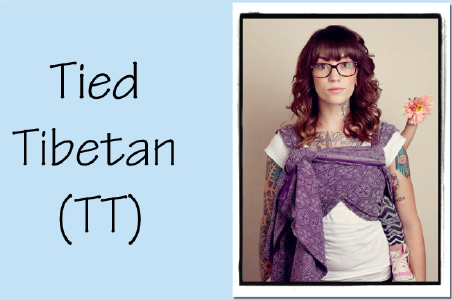
TUB: Tied Under Bum. Refers to where the knot is tied in a carry.
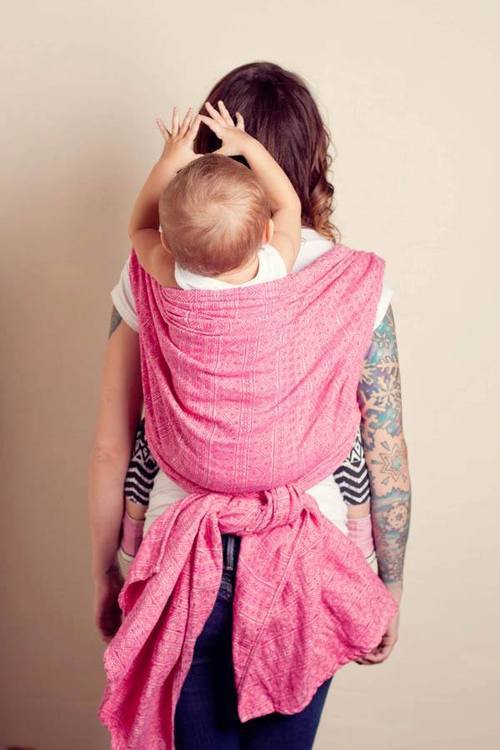
TV: Trade Value. The value given to a carrier in a trade transaction.
UMC: Ultimate Man Carrier, made by NuzzleMe Creations.
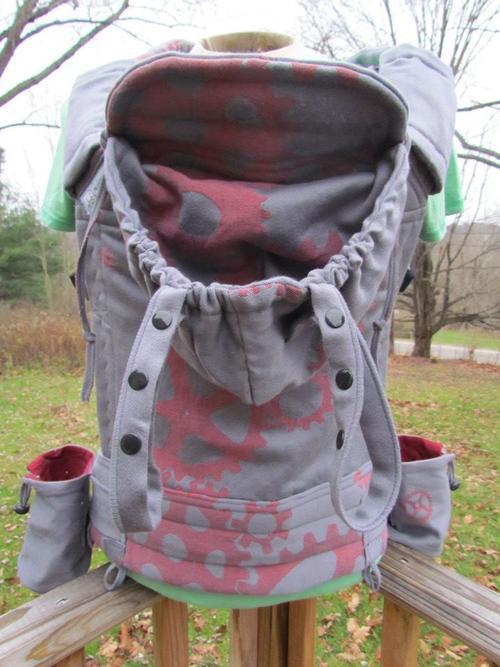
Unicorn: Used to refer to someone’s ultimate dream carrier.
Uppy: Uppymama (brand of handwoven wrap)
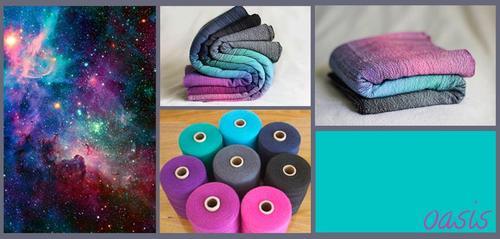
V.1: the first release (usually more HTF/sought after)
V.2: 2nd release Vat: Vatanai (brand of woven wrap)
VGUC: Very Good Used Condition
W&W: Warped and Wonderful (brand of woven wrap)
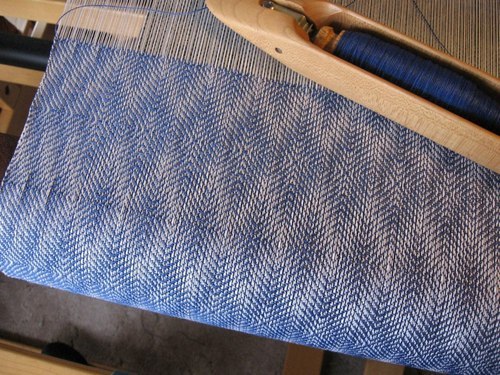
WAHM: Work At Home Mom
YGPM: You’ve Got a Private Message. Notifies someone to check their messages.
Zara: Name of an Ellevill woven wrap
